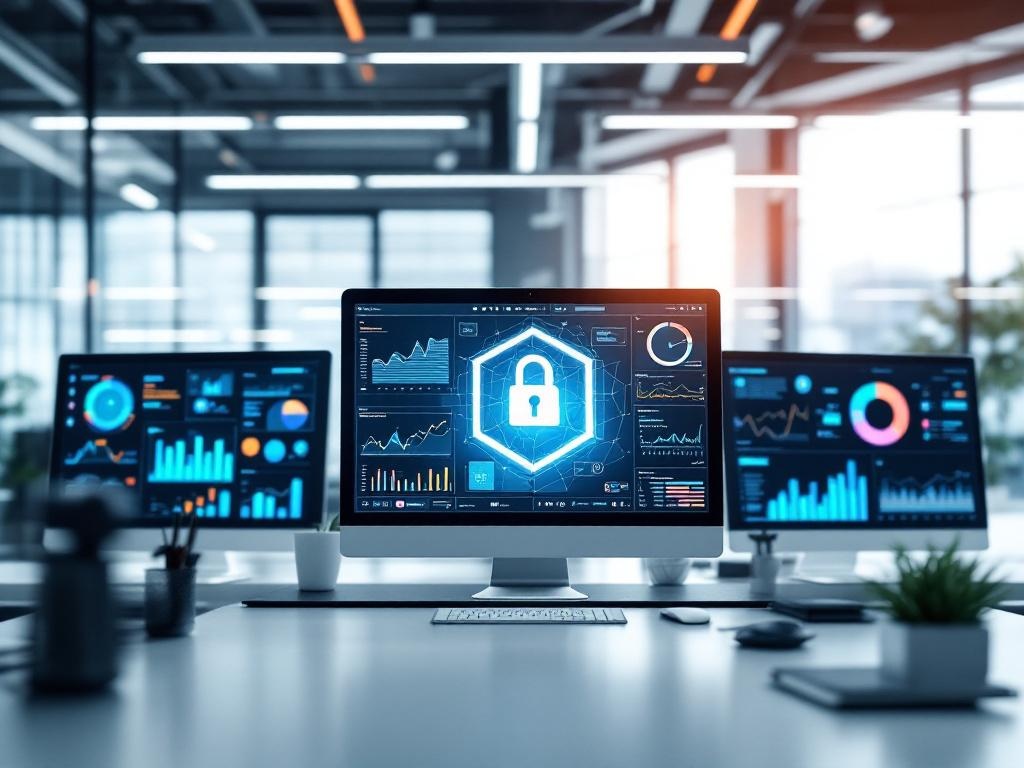
Understanding Security GRC Tools
Security GRC tools combine governance, risk management, and compliance functions into integrated platforms for organizations. These tools have developed from basic applications into comprehensive systems that offer complete visibility into an enterprise’s risk position while automating compliance processes in today’s business landscape.
Essential for Business Success
Security GRC tools are crucial for companies dealing with complex regulations like GDPR, CCPA, and industry standards. When you implement these tools, you’ll cut costs related to security incidents through early detection and automated controls. You’ll also enhance your audit readiness and improve collaboration between departments.
Centralizing compliance and risk data helps you make better decisions based on accurate, real-time information instead of scattered spreadsheets. This breaks down traditional barriers that hinder effective governance and provides the automated monitoring needed to maintain compliance in today’s regulatory environment.
Security GRC tools help you strengthen your security posture by consolidating risk management activities across your organization. The right tools can transform how you handle threats, turning compliance from a burden into a strategic advantage.
These platforms streamline documentation, automate assessments, and create clear audit trails that satisfy both internal and external requirements. By using security GRC tools, you’ll gain efficiency while reducing the likelihood of compliance gaps or missed vulnerabilities.
Organizations that automate their governance, risk, and compliance processes save an average of 30% on compliance-related costs.
7 Essential Security GRC Tools You Need: Boost Your Compliance and Risk Management
In today’s increasingly complex regulatory environment, leveraging cutting-edge security GRC tools is crucial for effective governance, risk management, and compliance. This section highlights seven essential tools that can significantly enhance your organization’s ability to navigate regulatory challenges, streamline compliance activities, and manage security risks efficiently. Each of these tools comes equipped with unique features tailored to meet the demands of the modern enterprise landscape. By understanding and adopting these top tools, organizations can not only ensure compliance but also gain valuable insights that drive informed decision-making and bolster their overall security posture. Dive into the tools that can revolutionize your approach to governance, risk, and compliance.
1. Understanding GRC Tools: The Foundation of Modern Risk Management
Security GRC tools form the backbone of modern enterprise risk management frameworks. These governance, risk, and compliance solutions have evolved dramatically from standalone applications to sophisticated integrated platforms that provide comprehensive visibility across your organization. Initially developed as siloed tools for specific compliance needs, today’s security GRC tools offer unified dashboards that connect previously disparate risk management functions. The evolution has been driven by the increasing complexity of regulatory requirements and the need for more effective security risk and compliance measures.
You’ll find these tools particularly essential in 2025’s complex regulatory landscape, where manual compliance tracking has become virtually impossible. With regulations like GDPR, CCPA, and industry-specific frameworks constantly evolving, security GRC tools provide the automation and oversight necessary to maintain compliance while efficiently managing security risks.
2. Key Benefits of Implementing Security GRC Tools
Implementing security GRC tools provides organizations with significant advantages in today’s complex regulatory environment. These specialized platforms streamline compliance processes by **automating** documentation, evidence collection, and reporting tasks that previously required extensive manual effort. With robust security GRC tools in place, you gain enhanced visibility into your organization’s **risk posture** through comprehensive dashboards and **real-time monitoring** capabilities.
Cost reduction represents another compelling benefit, as these tools help prevent costly security incidents through early detection and automated controls. By centralizing your compliance and risk data, security GRC tools enable better decision-making based on **accurate, up-to-date** information rather than fragmented spreadsheets and documents.
Many organizations find that implementing security risk and compliance solutions also improves their **audit readiness**, reducing the stress and resource drain of regulatory examinations. Your compliance teams can respond more efficiently to auditor requests by quickly retrieving required documentation from a centralized system.
Additionally, security GRC tools foster better **collaboration** between departments by creating standardized processes for risk assessment and compliance activities across your organization. This cross-functional approach helps break down traditional **silos** that often hamper effective governance.
Expert Insight: Implementing security GRC tools enhances compliance efficiency, reduces costs by preventing security incidents, and improves audit readiness through centralized documentation. These platforms provide real-time risk visibility and foster collaboration across departments, streamlining processes and breaking down silos for more effective governance.
3. Must-Have Features in Modern Security GRC Tools
Implementing effective security GRC tools requires understanding which features deliver the most value for your organization. Top-tier security GRC tools should include comprehensive risk assessment capabilities that continuously monitor your environment for emerging threats. These tools scan your infrastructure to identify vulnerabilities before they become exploitable weaknesses.
Automated compliance mapping saves countless hours by connecting regulatory requirements directly to your control environment. This functionality helps you implement appropriate risk response strategies when compliance gaps are identified, reducing the manual effort of tracking regulatory changes.
Your security GRC platform should offer customizable dashboards providing real-time insights into your risk posture. These visual representations help executives understand complex security data and make informed decisions quickly.
Workflow automation features streamline the entire governance process by:
- Automatically assigning remediation tasks
- Tracking completion status
- Escalating overdue items
- Documenting evidence collection
The most advanced security GRC tools now incorporate AI-powered predictive analytics that analyze historical data to identify emerging risk patterns before they become critical issues. This proactive approach to risk management helps organizations stay ahead of threats rather than constantly reacting to them.
Expert Insight: To maximize the value of modern security GRC tools, prioritize features such as comprehensive risk assessment, automated compliance mapping, and customizable dashboards. Incorporate AI-driven predictive analytics for proactive risk management and leverage workflow automation to streamline governance processes, ensuring efficient task management and timely compliance adherence.
4. Leading Security GRC Tools Vendors in 2025
The security GRC tools marketplace continues to evolve rapidly in 2025, with several vendors establishing themselves as market leaders. ServiceNow GRC offers exceptional integration capabilities for organizations already using their platform, making it an ideal choice for streamlining your risk management processes.
Archer remains the go-to solution for enterprise-level security GRC tools implementation, providing comprehensive risk management features that scale effectively for large organizations. Meanwhile, MetricStream has cemented its position within financial services and heavily regulated industries due to its robust compliance tracking capabilities.
LogicGate stands out among security GRC tools for its intuitive user experience and powerful workflow automation features that require minimal technical expertise. OneTrust continues to excel in privacy-focused compliance, making it particularly valuable for organizations handling sensitive data and facing multiple regulatory requirements.
For audit-centric operations, Galvanize (formerly ACL) provides security GRC tools with exceptional analytics capabilities that help identify patterns and anomalies across your organization’s risk landscape. IBM OpenPages rounds out the top vendors with its enterprise-grade solution featuring advanced AI capabilities that help predict emerging risks before they materialize.
Expert Insight: In 2025, leading security GRC tools include ServiceNow GRC for seamless integration, Archer for enterprise scalability, and MetricStream for compliance in regulated sectors. LogicGate offers user-friendly automation, while OneTrust excels in privacy compliance. For analytics, Galvanize and IBM OpenPages leverage advanced capabilities to enhance risk management.
5. Evaluating Usability and User Experience
When implementing security GRC tools, user adoption often determines success or failure. Effective security GRC tools must balance powerful functionality with intuitive design that encourages consistent use across departments. Your evaluation process should include hands-on testing with actual end users who will interact with the system daily.
Begin by assessing the interface layout and navigation structure. Does the tool present information logically and allow users to complete common tasks with minimal clicks? The most sophisticated security GRC tools incorporate user experience research to ensure workflows match how security professionals actually work.
Consider these key evaluation criteria:
- Dashboard customization options for different user roles
- Clarity of risk visualizations and reporting tools
- Search functionality and information retrieval speed
- Consistency across different modules and functions
Training requirements represent another critical factor. Some security GRC tools require extensive onboarding while others offer contextual guidance and self-service options. Training needs analysis should be conducted before selection to determine if your team can support the learning curve.
Mobile accessibility has become non-negotiable in today’s hybrid work environment. Evaluate how the security GRC platform performs on various devices and whether critical functions remain accessible for remote team members who need to respond to security incidents from anywhere.
Expert Insight: To ensure the success of security GRC tools, prioritize usability and user experience through hands-on testing with end users. Assess interface navigation, dashboard customization, and mobile accessibility, while also considering training requirements. A tool that aligns with user workflows will drive adoption and streamline security processes effectively.
6. Integration Capabilities: Creating a Connected Security Ecosystem
Modern security GRC tools must serve as the central hub for your organization’s risk management efforts. Effective integration capabilities allow these platforms to collect, analyze, and distribute critical security data across your technology ecosystem.
When evaluating security GRC tools, prioritize solutions with robust API frameworks that enable seamless connections with your existing infrastructure. The best platforms offer both RESTful APIs and GraphQL options, giving your development team flexibility when building custom integrations.
Look for GRC solutions that provide pre-built connectors for common enterprise systems including:
- ERP systems like SAP and Oracle
- ITSM platforms such as ServiceNow and Jira
- Identity management tools like Okta and Azure AD
- Cloud platforms including AWS, Azure, and Google Cloud
Security tool compatibility is another crucial consideration. Your GRC platform should integrate with security monitoring systems including SIEMs, vulnerability scanners, and SOAR platforms to create a continuous feedback loop for identifying and addressing risks.
Data exchange capabilities matter significantly when implementing security GRC tools. Evaluate platforms that support standardized formats (CSV, JSON, XML) and industry frameworks like STIX/TAXII for threat intelligence sharing. This flexibility allows for efficient data transfer between systems without manual intervention.
7. Deployment Models: Cloud vs. On-Premises Considerations
When implementing security GRC tools, you must carefully weigh cloud versus on-premises deployment options. SaaS GRC solutions offer several advantages, including faster implementation timeframes, reduced IT infrastructure costs, and automatic updates. These cloud-based tools typically provide better accessibility for remote teams and can enhance security risk and compliance efforts through continuous improvement.
However, on-premises deployment maintains greater control over sensitive compliance data. Some regulated industries require this approach to satisfy strict data sovereignty requirements. The security implications differ significantly – cloud solutions transfer some security responsibilities to vendors, while on-premises deployments keep security management internal.
Cost structures vary substantially between models:
- Cloud: Subscription-based pricing with lower initial investment
- On-premises: Higher upfront costs but potentially lower long-term expenses
- Hybrid: Balanced approach with some components in each environment
Scalability represents another critical factor when selecting deployment models. Cloud solutions typically scale more efficiently as your organization grows, while risk response strategies may require different approaches based on your deployment choice.

Security GRC tools have evolved from standalone applications to sophisticated integrated platforms that serve as the backbone of modern enterprise risk management frameworks. These governance, risk, and compliance solutions provide comprehensive visibility across organizations through unified dashboards that connect previously disparate risk management functions, enabling businesses to navigate today’s complex regulatory landscape effectively.
In today’s complex business environment, security GRC tools are indispensable for enterprises facing increasingly stringent compliance requirements and evolving security threats. These specialized platforms deliver significant value by automating documentation, evidence collection, and reporting tasks while providing real-time visibility into organizational risk posture, ultimately reducing costs through early threat detection, improving audit readiness, enhancing cross-departmental collaboration, and enabling data-driven decision making based on centralized, accurate information.
Conclusion
Security GRC tools have transformed from basic compliance applications into sophisticated platforms essential for modern risk management. These integrated solutions offer comprehensive visibility, automate compliance processes, enhance decision-making through centralized data, and foster cross-departmental collaboration. With features like AI-driven analytics, customizable dashboards, and robust integration capabilities, today’s GRC tools enable organizations to navigate complex regulatory environments efficiently while maintaining strong security postures across cloud and on-premises deployments.
Actionable Steps
- Evaluate GRC tools based on integration capabilities with your existing security ecosystem to ensure seamless data flow
- Prioritize usability and user experience when selecting tools to maximize adoption across departments
- Look for platforms offering automated compliance mapping to reduce manual tracking of regulatory changes
- Consider deployment models (cloud vs. on-premises) based on your specific industry requirements and data sovereignty needs
- Select vendors that provide scalable solutions to accommodate your organization’s growth and evolving security needs






